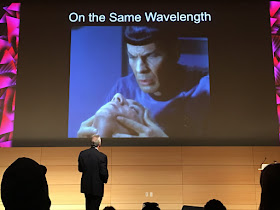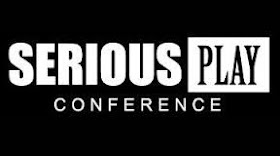In this response, Claire Baert describes her fascination with citizen science games and poses some questions about the practice.
This morning, like most days, I woke up early, had a latte, turned on
my computer and opened
Gamasutra. Like most days, I'm looking for
articles discussing how games can help advance scientific research. But
this morning, for the first time, I found the article I was waiting for.
A
blog post by
Sande Chen,
featured by Gamasutra, and [re]titled: Why designers should embrace
'citizen science' . This was the trigger for me to start this blog, to
write about citizen science games and share my passion with the
Gamasutra community. In this first post, I will introduce many of the
citizen science games everyone can play to advance science, and briefly
introduce the different topics I will cover in the next posts.
My story with citizen science games began in 2013, in a small game
studio in the UK. I was researching free to play, casual browser games,
and was doing a quick play through the tutorials. Between Farmerama and
Grepolis, I had listed a game I had never heard of:
Foldit.
First surprise, it's a client game. Second surprise, I'm taught how to
mutate a protein to form more hydrogen bonds, not that casual. Third
surprise, I'm doing real science. (Fourth surprise, first thing I did
when coming back home was downloading
Foldit on my laptop.)
I quickly became fascinated with the concept of citizen science games
and started searching more of them. Not any kind of serious games, but
specifically games that allow us, players, to contribute to authentic
scientific research, without any scientific background. Games in which
we provide valuable scientific data, accelerate research by analysing
data, or solve complex scientific problems. Games that help diagnosis
and cure diseases or that can answer important scientific questions.
After learning how to fold proteins in
Foldit, I learnt how to fold RNA molecules in
EteRNA and DNA molecules in
Phylo. By playing these puzzle games, we are helping eradicate diseases. On my phone, I shoot at parasites in
MalariaSpot to diagnose malaria in blood smear, I'm growing a microbe colony for
Colony B. I'm mapping the brain in
Eyewire and
Mozak, advancing the field of neuroscience. I also dared join the quantum computing field, moving quantum atoms in
Quantum Moves, optimising quantum algorithms in the prototype of
meQuanics and solving quantum error corrections in
Decodoku. All these steps are important to build quantum computers. Recently I've been showing off my navigation skills (ahem) in
Sea Hero Quest,
(and in VR!), to provide data to scientists researching dementia. With
almost 3 million players,
Sea Hero Quest is the largest dementia study
in history.
 |
| Screenshot from Sea Hero Quest -VR |
I loved the concept of citizen science games so much that about 2
years ago, I launched a website dedicated to them. It's called… well…
Citizen Science Games.
For the content, I contacted many scientists and journalists, which led
to the opportunity to join one of the team. I am now bringing my
experience from the game industry to
Stall Catchers, in which we annotate blood vessels to help answering questions about Alzheimer's disease.
Scientists have started harnessing our love for games to conduct
scientific research, sometimes on their own, sometimes with game
designers and developers. As Sande Chen reported in her post, they have
been using different design approaches: integration, gamification and
separation. Most of the games mentioned above are examples of
integration. The gameplay was designed around a scientific problem.
Stall Catchers uses game elements: we get points, accuracy feedback,
climb leader boards and participate in punctual competitions. To
illustrate the separation approach, I will use the example of
EVE
Online.
EVE Online is the first (and only) mainstream games that
integrated real citizen science activities,
Project Discovery,
to the game. We are looking for exoplanets by analysing luminosity
measurements of stars. By reaching more than one million contributions
in one day, Project Discovery became one of the most successful online
citizen science project. This is also one of the rare citizen science
game having a few articles on Gamasutra, which recently covered the
launch of the
second round of Project Discovery and an awesome
GDC talk by CCP and MMOS.
 |
| Project Discovery |
There is an increasing number of citizen science games. They generate
tangible results and publications and can lead to important
discoveries. Scientists write about design, mechanics, difficulties,
pitfalls, discoveries, results, recommendations. They try to understand
what motivates people to engage with these games. There is also some
controversies. Do games attract or retain participants in citizen
science project? Shall citizen science be gamified? Are games compatible
with serious and rigorous traditional scientific research? All these
questions find some answers in papers and will be discussed in future
posts.
How could more studios embrace the concept? What scientific problems
could be brought to existing games? What game genre would be best fitted
for citizen science projects? What would be the best ways to integrate
them? By starting this blog, I'm hoping to raise awareness about citizen
science games. I'm also hoping to establish contact and start
discussions with designers and developers interested in the genre.
And finally, I'm a big fan of this quote so I have to share it. It was written by
Dara Mohammadi who was a scientific adviser on
Sea Hero Quest:
"As a planet we spend 3 billion hours a week playing online games. If
even a fraction of that time can be harnessed for science, laboratories
around the world would have access to some rather impressive cognitive
machinery."
[This article originally appeared on Claire Baert's blog on Gamasutra.]
Claire Baert has 10 years experience in the video game industry and now focuses on citizen science games. She launched the website, Citizen Science Games, in 2016.




















